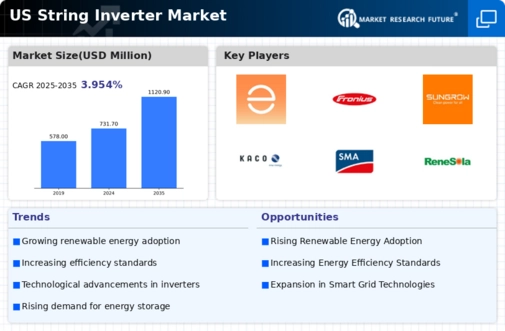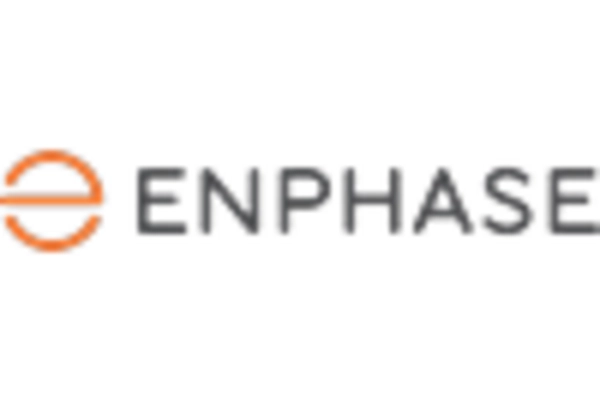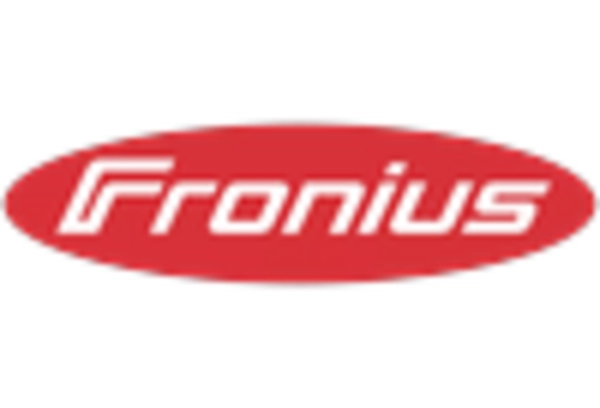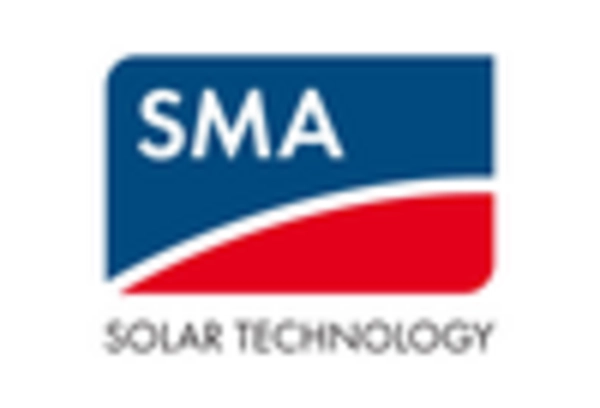Rising Energy Costs
The string inverter market is experiencing growth due to the rising costs of traditional energy sources. As utility rates continue to climb, consumers and businesses are increasingly seeking alternative energy solutions. This trend is particularly evident in states where electricity prices have surged by over 20% in recent years. The financial incentive to invest in solar energy systems, which utilize string inverters, becomes more compelling as the cost of grid electricity rises. Consequently, the string inverter market is likely to benefit from this shift as more individuals and organizations look to mitigate their energy expenses through solar installations.
Growing Environmental Awareness
There is a notable increase in environmental awareness among consumers and businesses, which is driving the string inverter market. As more individuals recognize the impact of fossil fuels on climate change, the shift towards renewable energy sources becomes more pronounced. Surveys indicate that over 70% of Americans support the transition to clean energy, which is likely to bolster the demand for solar energy systems equipped with string inverters. This heightened awareness not only encourages investment in solar technology but also aligns with broader sustainability goals, further propelling the string inverter market forward.
Expansion of Solar Incentive Programs
The expansion of solar incentive programs at both state and federal levels is a key driver for the string inverter market. These programs, which may include tax credits, rebates, and grants, are designed to lower the upfront costs of solar installations. For instance, the federal solar tax credit allows homeowners to deduct 26% of the cost of solar systems from their federal taxes. Such incentives are likely to stimulate demand for solar energy solutions, including those utilizing string inverters. As more consumers take advantage of these programs, the string inverter market is expected to see substantial growth.
Technological Innovations in Inverter Design
Innovations in inverter technology are reshaping the string inverter market. Manufacturers are continuously developing more efficient and reliable string inverters, which enhances their appeal to consumers. Recent advancements include improved thermal management systems and enhanced grid compatibility, which can increase energy output by up to 10%. As these technologies evolve, they are likely to attract a broader customer base, including commercial and industrial sectors. The ongoing focus on R&D in inverter design suggests that the string inverter market will continue to evolve, offering more sophisticated solutions to meet diverse energy needs.
Increased Adoption of Smart Grid Technologies
The integration of smart grid technologies is significantly influencing the string inverter market. As utilities modernize their infrastructure, the demand for advanced energy management systems is on the rise. String inverters play a crucial role in this ecosystem by enabling real-time monitoring and optimization of solar energy production. The market for smart grid solutions is projected to grow at a CAGR of approximately 15% over the next five years, which suggests a corresponding increase in the adoption of string inverters. This trend indicates that the string inverter market is poised for expansion as utilities and consumers alike embrace smarter energy solutions.

















Leave a Comment